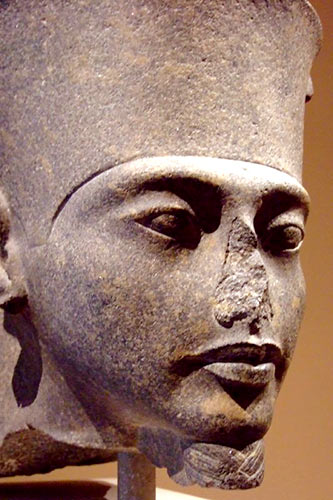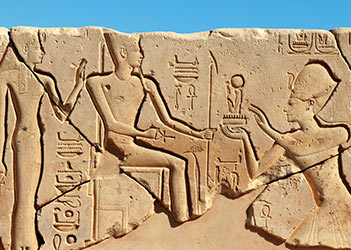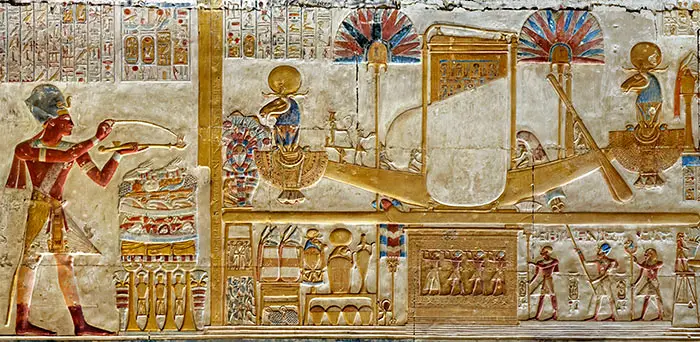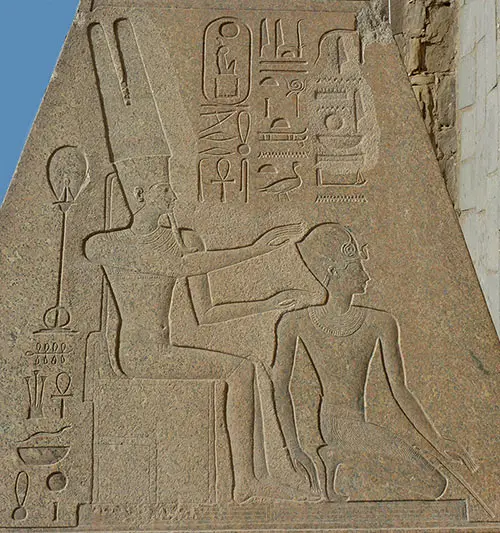Names and Titles
Amun was given the title “King of the Gods” of Upper Egypt.
Scholars discovered several different spellings of the name Amun in Egyptian literature. Some of the different spellings are Am, Amen, Amon, Amoun, Ammon and Hammon.
Other countries equated Amun with their own deities:
- Egyptians equated him with the god Min.
- The Greeks equated Amun with Zeus.
- The Romans equated him with Jupiter.
Amun-Ra
Over time, the Egyptians combined Amun with Ra to form Amun-Ra. Alternate spellings of this name include Amen-Ra, Amon-Ra, Amon-Re, Amun-Re and Ammon-Ra. Egyptians referred to Amun-Ra as “one one” and “no second” because they considered him the supreme god.

Pharaoh Seti I, offering to Amun and Mut
Roles
- Amun’s first role was as the patron saint of the ancient Egyptian city Thebes, where the ruling pharaoh and his royal family resided. Here he became joined with the sun god Ra and the two became known as the Egypt god Amun-Ra.
- Amun-Ra was the king of the Upper Egyptian gods and one of the most important gods in Egypt, second only to Osiris.
- Egyptians gave Amun-Ra the role of a creative power responsible for all life on earth, in heaven and in the Tuat (underworld).
- Amun was also the father of the pharaoh.
Family
Amun was part of the Thebean triad along with Mut and Khonsu (a triad was a group of three gods including a mother, a father and a child).
- Wife (as Amun): Amunet, a mother-goddess.
- Wife (as Amun-Ra): Mut, goddess of Thebes, female counterpart of Amun-Ra.
- Son: Khonsu, moon god of regeneration and healing

©Kairoinfo4u – The sacred boats of Amun-Ra, Mut and Khonsu
Worship
The history of the development of Amun’s worship is fascinating. He started as a deity worshiped only in Thebes. After the pharaohs moved their capital to Thebes, Amun became a major god. During the Eighteenth Dynasty, he assimilated with Ra and grew in importance.
Many of the Eighteenth Dynasty kings commissioned frescos showing Amun-Ra fathering them. This was also the way rulers whose legitimacy was in doubt proved their right to rule. When Hatshepsut began ruling for her stepson, she commissioned murals showing Amun-Ra fathering her. She used these murals to legitimize her kingship and remain pharaoh until her death.
As the Eighteenth Dynasty progressed, Amun-Ra’s cult grew in wealth and power. Soon, the cult rivaled the pharaoh in power and prestige. This fact contributed to Akhenaten’s decision to declare Aten the only god in Egypt. He moved the capitol to a new city but as soon as he died, Amun-Ra’s priests regained their power. Thebes became the capitol again and the cult of Amun-Ra continued to gain power.

© Hannah Pethen – Hatshepsut knealing before Amun









































